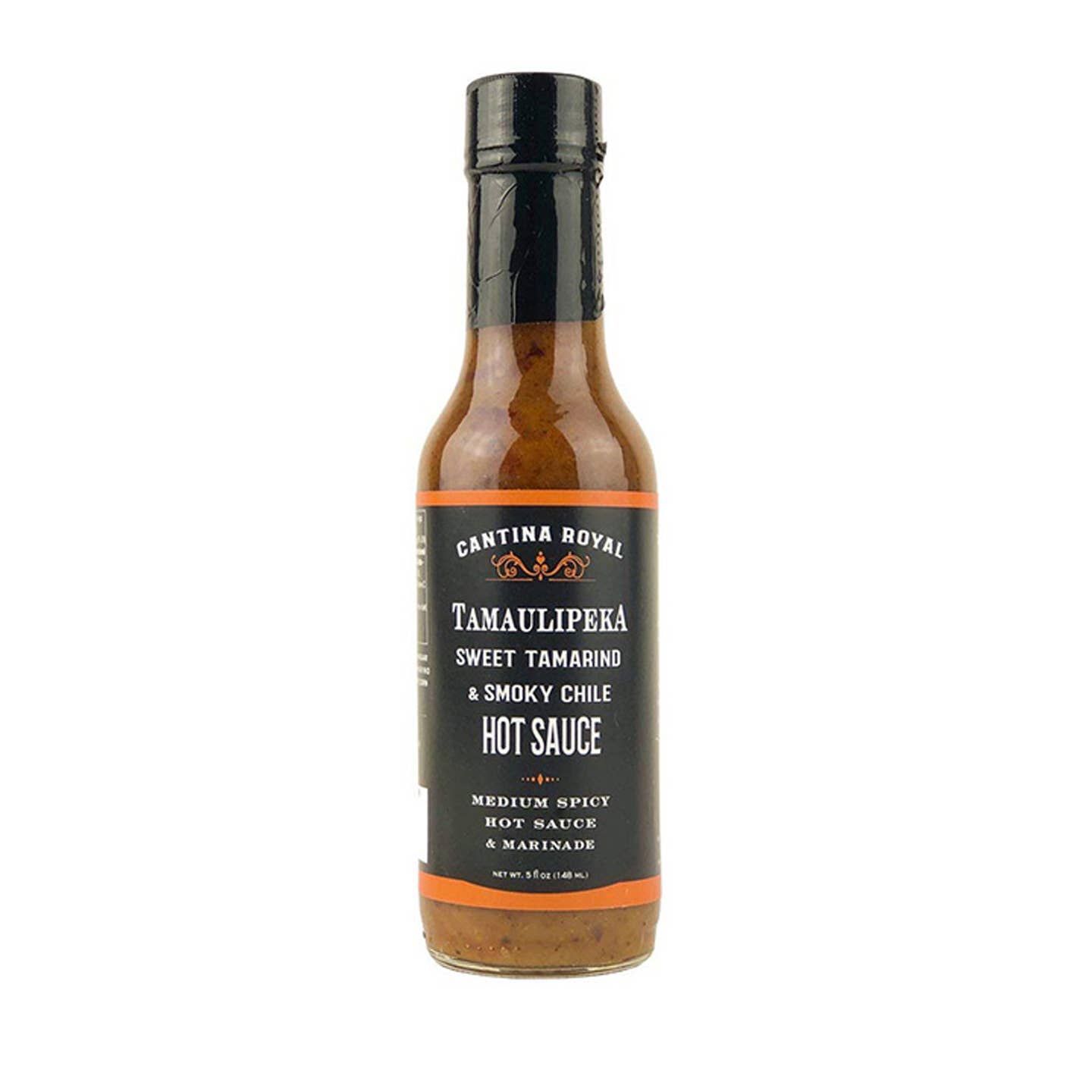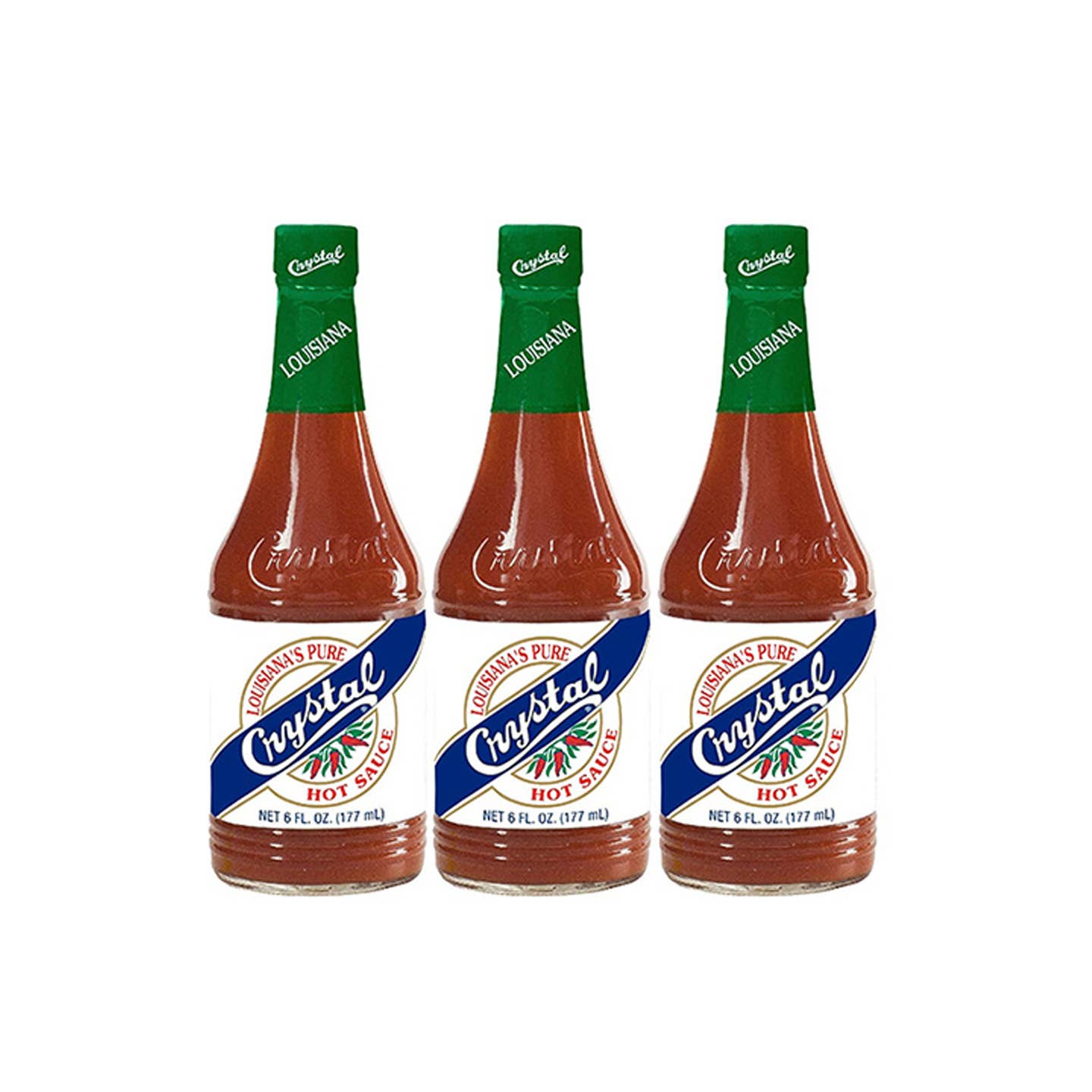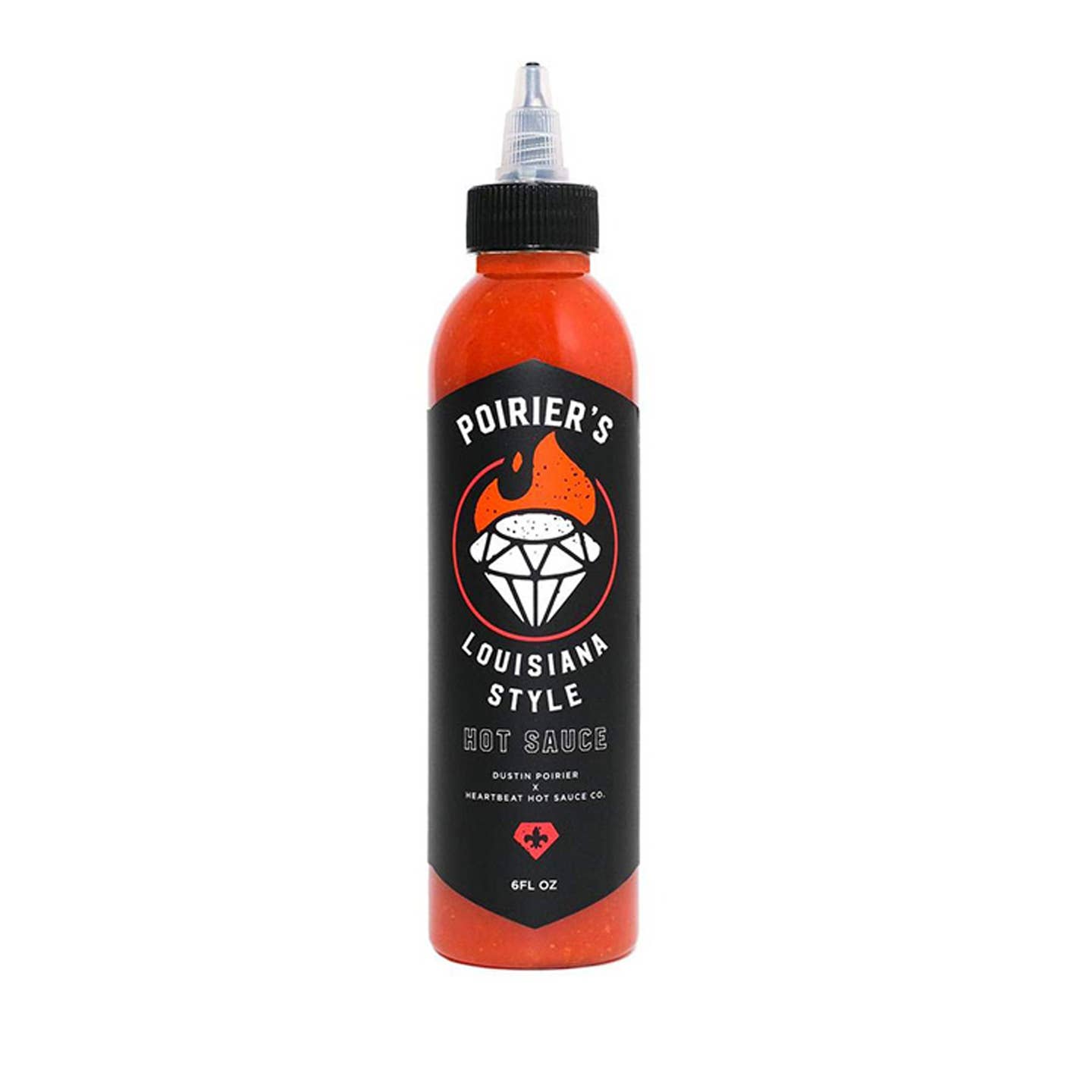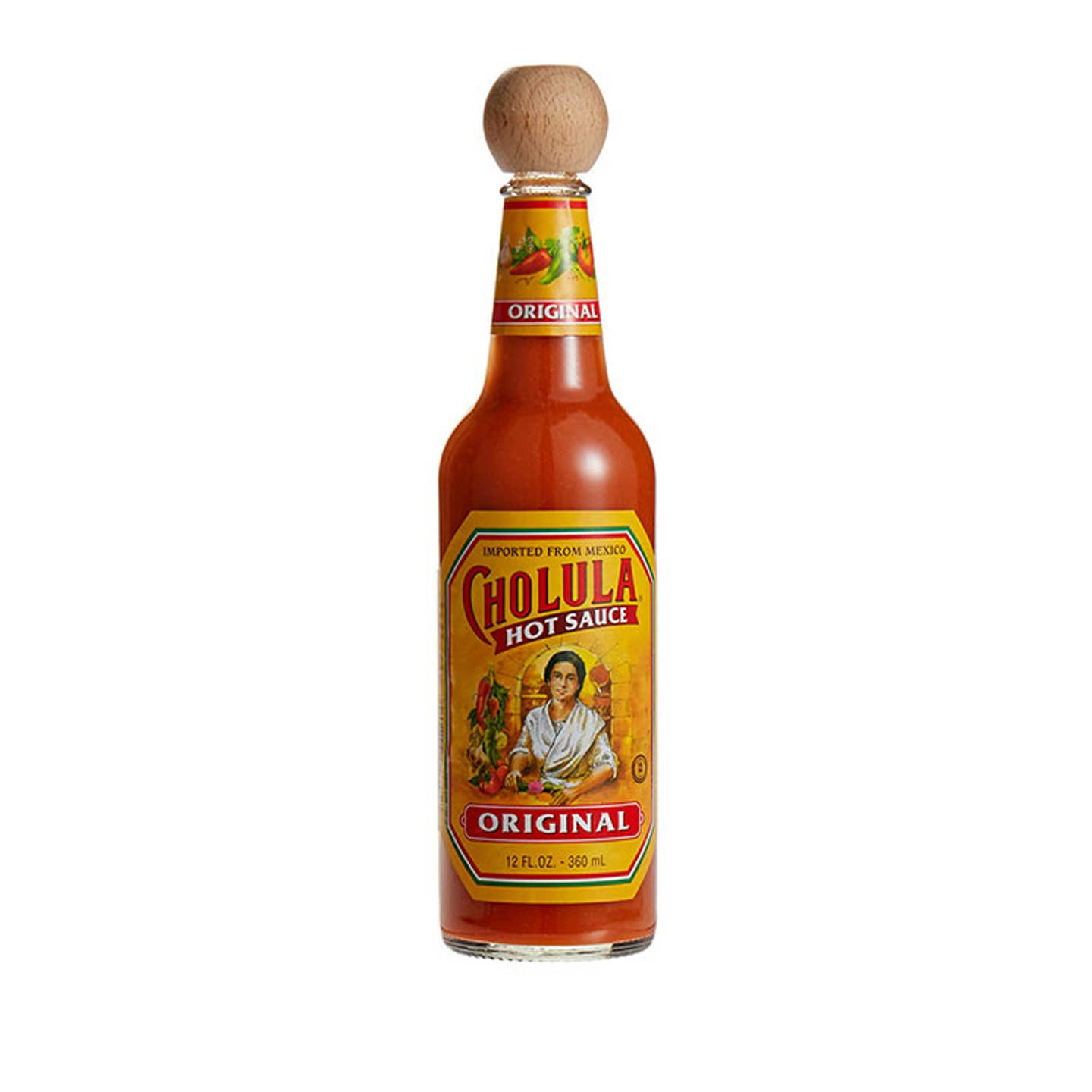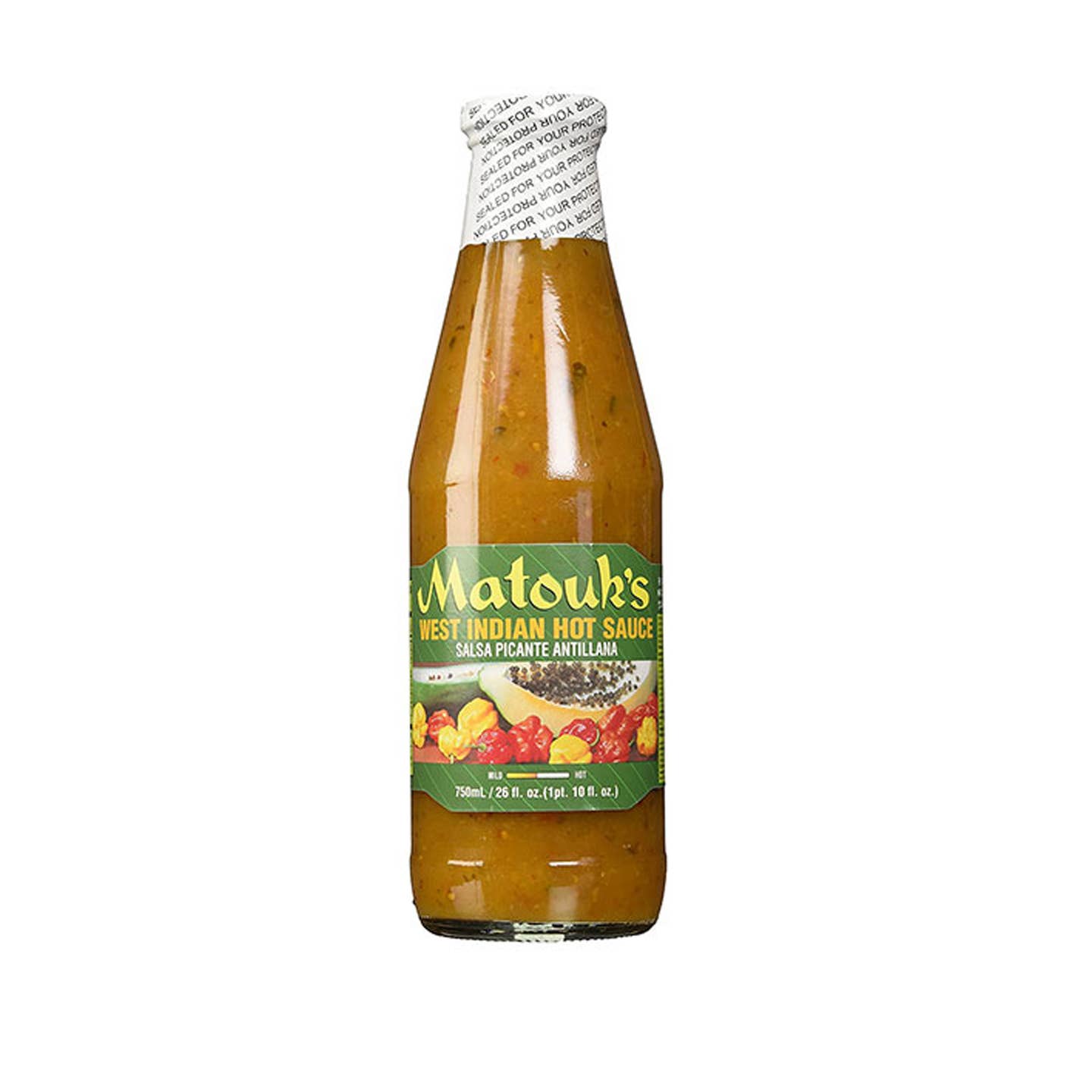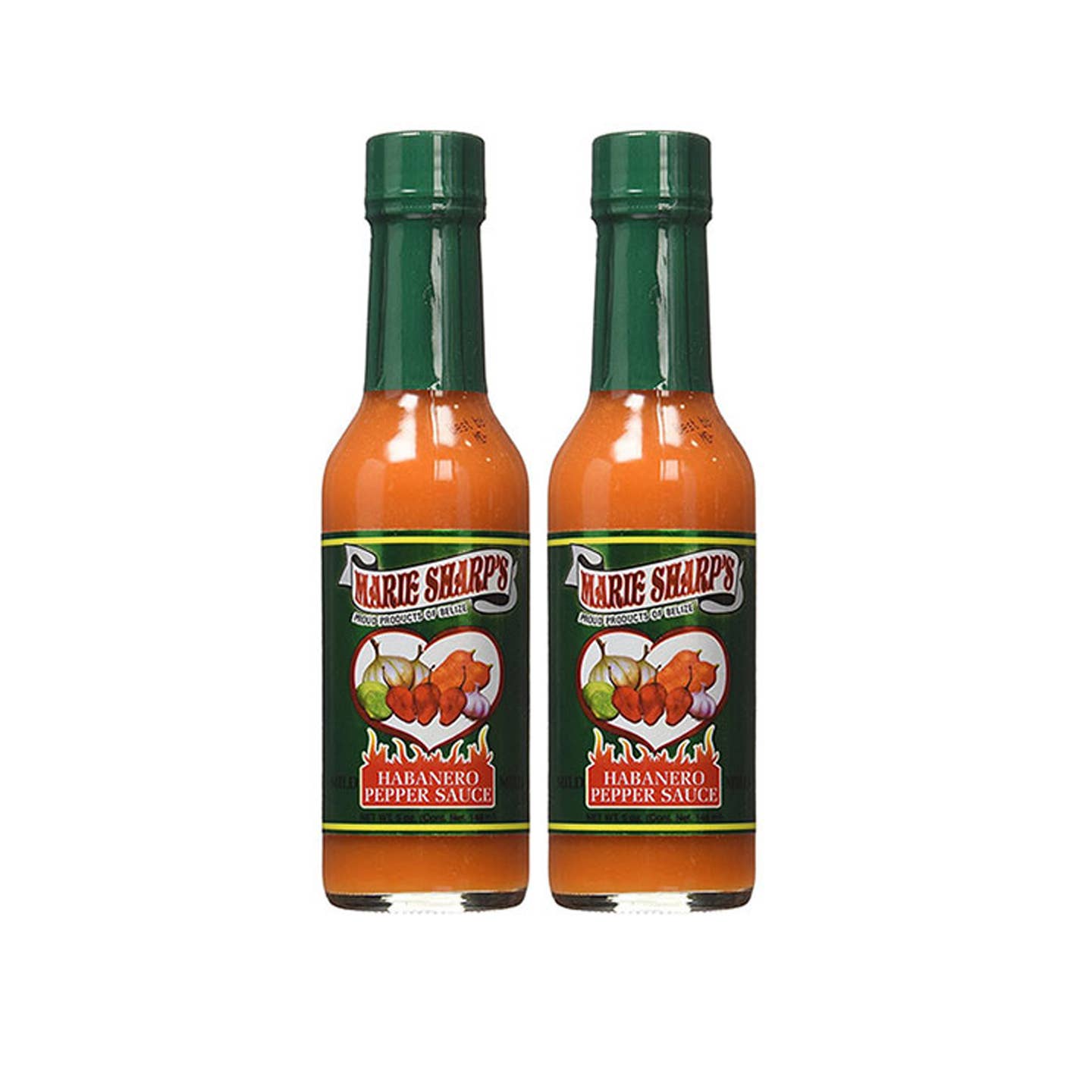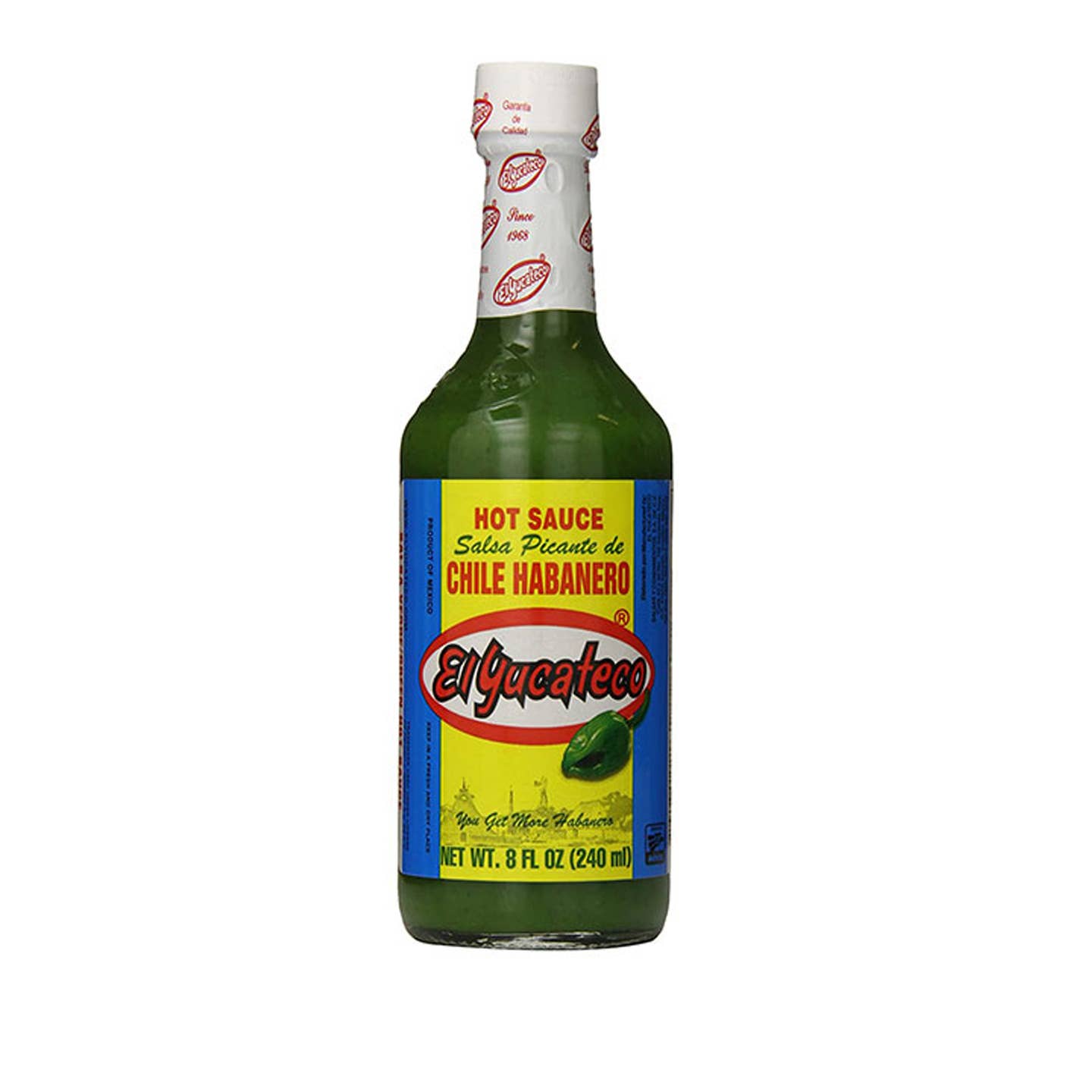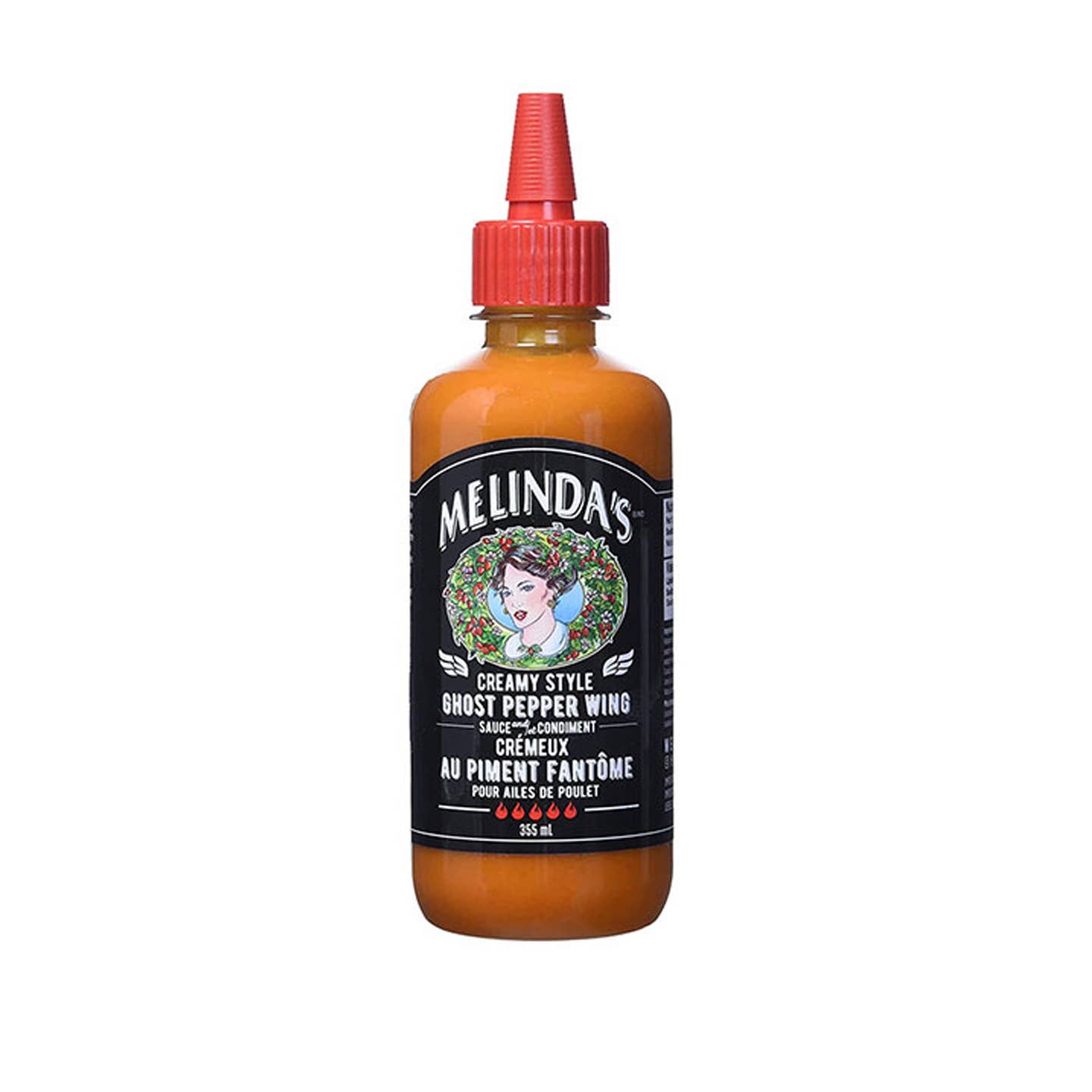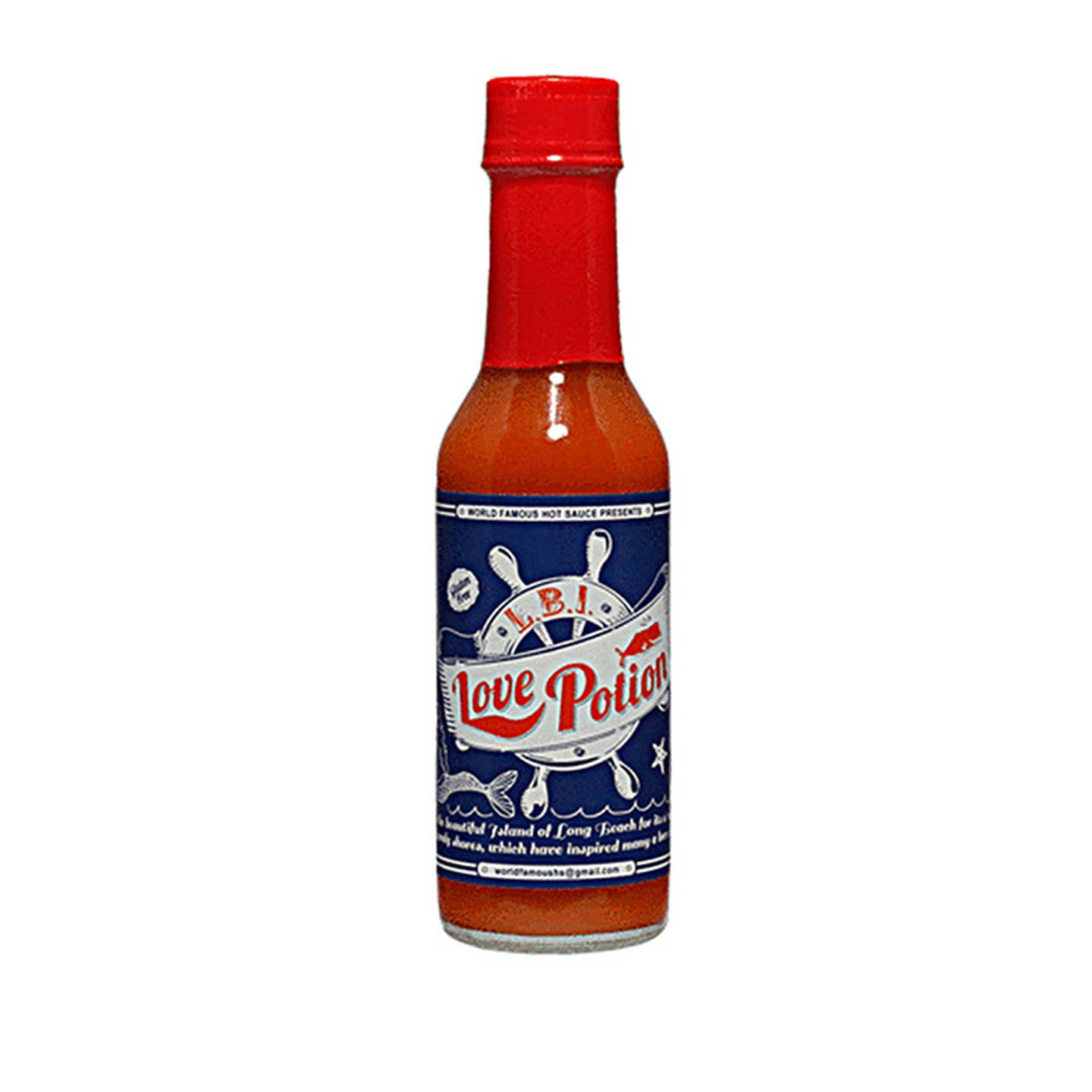The Best Hot Sauce to Spice Up Your Life
Navigate flavor and fire to find the perfect pairing for every dish.
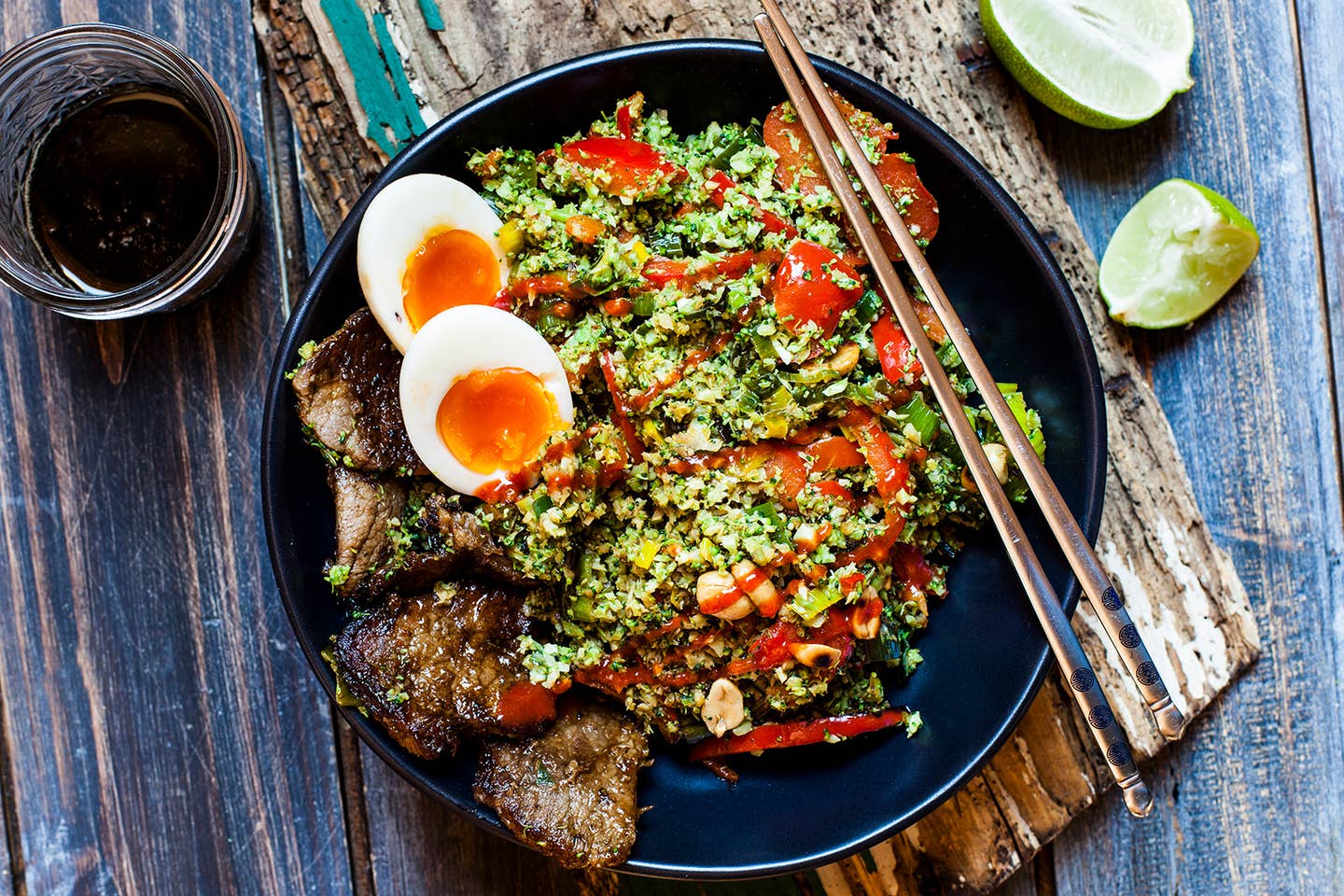
Hot sauce, like all condiments, holds the power to enhance a dish or the risk of totally overwhelming it. But its invigorating, enjoyable physiological effects are unique, as capsaicin triggers nerve receptors like an actual burn.
“Your brain, perceiving this physical burn, responds by releasing all kinds of helpful brain chemicals—adrenaline, endorphins, serotonin—that are supposed to give you what you need to deal with what it perceives as this really dangerous situation,” says Noah Chaimberg, the founder of Heatonist, which sells hot sauces in New York City and online. “People just get hooked on this brain reaction.”
Chile peppers don’t just provide that fiery capsaicin, but flavor too. Heather Suter, the owner of hot sauce specialist Greenport Fire, helps customers look for a sauce that complements food beyond bringing the heat and breaks new ground. “You don’t want it to mask the flavors, you want it to enhance and elevate your meal,” she says.
Finding the best hot sauce for you, or for your dish, is all about having fun, says Chaimberg. “It’s about discovery and exploring and learning something new in a fun environment. As long as it tastes good to you, you’re doing the right thing.”
It helps to have a few ideas of what you’re looking for in order to get started, so we tasted through a huge selection in a variety of different styles in order to find the best hot sauces. Start by sampling a few stand-outs, and maybe you’ll be inspired to even make your own.
- Best Overall: Cantina Royal Tamaulipeka
- Best Value: Crystal Hot Sauce
- Best Cayenne Pepper-Based: Heartbeat Hot Sauce Poirier’s Louisiana Style Hot Sauce
- Best Vinegar-Based (Non-Cayenne): Cholula Original
- Best Fruit-Based: Matouk’s West Indian Hot Sauce
- Best Super Hot: Melinda’s Ghost Pepper Wing Sauce
- Best Green Sauce: El Yucateco Chile Habanero
- Best Non-Refrigerated: World Famous Hot Sauce Love Potion
- Best Mild Sauce: Marie Sharp’s Mild Habanero Sauce
Features to Keep in Mind When Shopping for Hot Sauce
Types of Hot Sauces:
There are many ways to categorize hot sauces. Some go by the main non-pepper ingredient, such as vinegar, fruit, oil, or something else entirely. Others go by the type of pepper, like fruity habanero, measured jalapeño, or ultra-fiery ghost pepper. The interplay of these two categories creates regional styles: Cayenne and vinegar (plus salt) create Louisiana-style hot sauce, and many Mexican-style sauces in the U.S. follow the same formula with a mix of peppers and sometimes garlic too. Chaimberg notes these vinegar-based sauces are a nice way to feature the peppers, as there are minimal flavors to distract.
Many sauces—especially from the Caribbean—rely on a fruit-base (or sweet vegetable) such as papaya, carrots, and tomatoes to both boost the flavor of the peppers and counteract the heat with a little sweetness. Sauces that use an oil base tend to end up a little creamier, with a richness that rounds off sharp edges to counteract some of the heat. On the opposite end of that spectrum, water-based sauces with nothing added tend to magnify the heat. Finally, there are sauces that don’t use actual peppers, using an extract-based formula in pursuit of the hottest heat possible. However, this forces them to shed the actual flavor of the peppers.
Heat Level:
The heat level of a sauce derives from the power of the pepper used to make it, but also depends on the other ingredients and texture of the sauce. The Scoville Scale is often used to quantify the heat of a sauce, but since it is organoleptic (meaning it relies on humans to taste it) and directly measures only the capsaicinoids in pepper, it opens a lot of room for variation. A jalapeño ranks 2,500-8,000 Scoville units and a habanero 150,000-275,000, but that doesn't inherently mean that all habanero sauces are that much spicier than a jalapeño since it depends on quantity, parts of the pepper used, and preparation. That leaves companies to self-label the heat on their own scale. In general, mild sauces have almost no heat and medium just a little, but, from there, brands tend to create their own scale calling the sauces, fiery, hot, hotter, or hottest.
Flavor and Ingredients:
After heat level, Suter asks customers about their preferred flavor profile, which she categorizes as “sweet, smoky, traditional, and garlic-based.” While fruit- and vegetable-based sauces don’t always taste of the original fruit, they almost always fall into that sweet category. Meanwhile, others tend to cross categories, coming out as sweet and smoky, or a traditional sauce with added garlic. The main thing is to figure out what you like and find sauces that fit that profile.
Pairing With Food:
“Usually, fish or grilled chicken pair well with sweeter sauces, meats pair well with more savory sauces, eggs and oysters tend to be more like the traditional Louisiana-style,” says Suter. Chaimberg always starts by tasting his sauces on a spoon so he can get a clean read on the flavor before thinking about pairing it with food. He says rich foods like mac and cheese do well with a vinegar sauce to cut through or juxtapose the high fat content. “It gets more interesting in the mouth.” For grilled salmon, he likes using a fruit-based hot sauce, because the sugar in the fruit will caramelize with the high heat to give a great crust to the fish, and provide some texture. “But as long as you’re having fun, you’re doing it right.”
Our Top Picks
Best Overall: Cantina Royal Tamaulipeka
Best Overall
This Brooklyn-based brand came out of the Mexican restaurant and bar of the same name and makes a variety of impressively complex sauces. Named for the state of Tamaulipas, it uses a corn oil base to bring together the sweetness of tamarind concentrate and the spice of smoked peppers. Cantina Royal’s oil-based sauces separate as they sit, so they need a vigorous shaking before using, but then the Tamaulipeka takes the tongue on a journey, beginning with a gentle sweetness, tempered by the sour of tamarind, then a growing heat on the finish. Though labeled as “medium,” the spice lingers strong. An honorable mention goes to the brand’s Tomasa (which IS labeled as intensely spicy, but feels less so), for its originality and flavor. It also uses a corn oil base but adds garlic, onion, celery, and chia powder plus manzano and habanero peppers for a beguilingly savory sauce that brings big intensity without overwhelming everything.
Best Value: Crystal Hot Sauce
Best Value
Specialty craft hot sauces deserve the big prices they command, but if you just need something affordable, no sauce makes a better deal than Crystal. A classic Louisiana-style with a vinegar base, aged red cayenne peppers, and salt, it tastes brighter and bolder than anything else in the same price range. The flavor of the peppers came through cleaner than similar sauces, and the heat builds nicely as it sits over time.
Best Cayenne Pepper Based: Heartbeat Hot Sauce Poirier’s Louisiana Style Hot Sauce
Best Cayenne Pepper Based
Canadian brand Heartbeat Hot Sauce paired up with UFC star Dustin Poirier to make this “ode to Lafayette, Louisiana.” It cheats a little on the classic aged cayenne, vinegar, salt formula by bolstering the peppers with red habaneros, the flavor with celery and garlic, and the texture with canola oil. But the results remain undeniably Louisiana-style, although taken up many levels, with terrific complexity from celery and mixed peppers. The heat hits the labeled medium mark pretty dead-on, and the oil tones down the vinegar, making it extremely versatile. Chaimberg also notes that his current favorite in this category is the K.O. Edition, which adds in ghost pepper powder for more heat and a bit of smoke.
Many of Heartbeat’s unique sauces deserve recognition alongside this one, including the virtually uncategorizable “Dill Pickle Serrano” which walked a narrow line between spicy relish and hot sauce, and the earthy, mushroom-bolstered Lion’s Mane Piri Piri, which Chaimberg called his current “go-to.”
Best Non-Cayenne Vinegar Based: Cholula Original
Best Non-Cayenne Vinegar Based
Of the Mexican-style vinegar-based sauces on the market, Cholula won based on flavor. The mix of arbol and piquín peppers creates a far more interesting sauce than the single pepper sauces and avoided the fustiness detected in others, likely from garlic powder or other added spices. Some thicker sauces were nice for eating as they don’t run everywhere on the food, but Cholula just tasted better.
Best Fruit Based: Matouk’s West Indian Hot Sauce
Best Fruit-Based
Many of the best Caribbean hot sauces come from home kitchens and rarely make it off their own islands. Each island has its own style, and the flask packaging of some sauces actually comes from sailors re-using rum bottles to fill up as they traveled, explains Chaimberg. But until you can next make it down for a refill, this company out of Trinidad and Tobago is pretty widely available.
While it’s hard to taste the actual papaya, it provides a sweetness that combines with an especially thick sauce to temper the power of the aged, pickled scotch bonnet peppers and mustard. This sauce is easy to use anywhere that needs a bit of fruitiness. The chunkiness also adds more interest to the plate, even as the off-yellow color detracts.
Best Mild Sauce: Marie Sharp’s Mild Habanero Sauce
Best Mild Sauce
Many of the sauces from the 40-year-old company out of Belize rivaled the winners in other categories, but it stood out strongest as the front-runner among the mild sauces. While other companies leaned on creaminess, fruit, or garlic to achieve big flavors without added spice, Marie Sharp’s mild version kept pepper flavor as the star of the show. The carrot-based sauce also keeps a hint of heat, but it leaves the tongue quickly, making it an excellent beginner option for people looking to add more heat. Marie Sharp’s Orange Pulp Habanero hits just a little higher on the heat scale and delivered excellent, original flavor, making it a good step up from the baseline.
Best Green Sauce: El Yucateco Chile Habanero
Best Green Sauce
An affordable, easy find on grocery store shelves, this little bottle punches above its weight, bringing out the sweetness of the habanero pepper with nothing more than a heavy dose of salt, a little water, and some spices. The water-based sauce works well on foods that don’t need the vinegar to cut through the fat—such as leaner meats or fish—or where the vinegar would interfere with other flavors. The only downside is that the fantastical green color comes from dyes, not natural peppers.
Best Super-Hot: Melinda’s Creamy Style Ghost Pepper Wing Sauce
Best Super-Hot
All of Melinda’s sauces worked well, and the Original Habanero XXXtra Hot ranked high overall, but this wing sauce shone in the super-hot category as one of the only sauces that seemed designed for enjoyment, rather than pain. The heat comes from the title ghost pepper, along with habanero and cayenne peppers, and it combines a number of categories into a single sauce with both vinegar and oil, plus carrot, garlic, and more. It starts out milder than many of the super-hots, but the creamy texture really coats the whole mouth in spice, building over time as the flavors evolve.
Best Non-Refrigerated: World Famous Hot Sauce Love Potion
Best Non-Refrigerated
Many of the best sauces on this list—all of the Cantina Royal, Heartbeat, and Marie Sharps, for example—require refrigeration to stay fresh. But if you’re looking for the best sauce to keep in the car, at your desk, or (hello, Beyoncé) in your purse, this is the one for you. It tastes a lot like a Louisiana-style sauce, but uses aged habaneros instead of cayenne peppers, and boosts those with a vegetable blend (carrots, onions, and garlic). The big vinegar flavor hits at first, giving way to complex pepper with just a little bonus from the extra additions, making it an excellent pairing for mac and cheese, cheesy grits, and similar foods.
Ask the Experts
Q: Do hot sauces expire?
Consider this your annual reminder that most labels actually give “best by” dates, not expiration dates. So, the “best by date” might be in a year, but the real question is how quickly does it deteriorate after that? With most vinegar-based sauces the answer is: pretty slowly. Salt and vinegar are both preservatives, so those styles can probably go three or more years without changing too much. Fruit- or vegetable-based sauces, and especially ones without vinegar, probably last half that time—and need to be kept in the refrigerator. But the good news is that even if the sauce is no longer “best,” that will generally apply to things like color and flavor, rather than food safety.
Q: Can I freeze hot sauce?
You could, but why would you want to? As noted above, it already lasts for a very long time and freezing will do no favors to the flavor or texture.
Our Take
Hot sauce is “a food that goes on food,” says Chaimberg, and one of the things he likes most about hot sauces is the variety of flavors that exist and the constant expansion of the category. “We’re starting to see sauces from more places that don’t have a traditional hot sauce culture,” which brings in new ingredients as people explore it, he says, noting one from Canada using cedar-infused vinegar and one of his own bottles that used gooseberries and gentian root, which fits his rubric for the best sauces: “Tremendous flavor and originality.”
Keep Reading
Continue to Next Story
